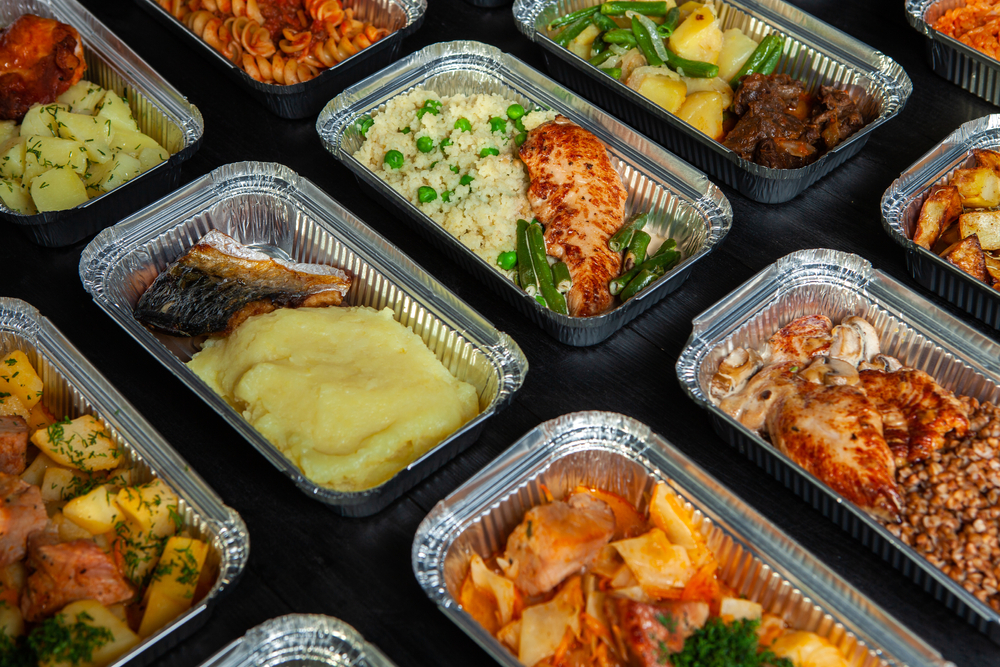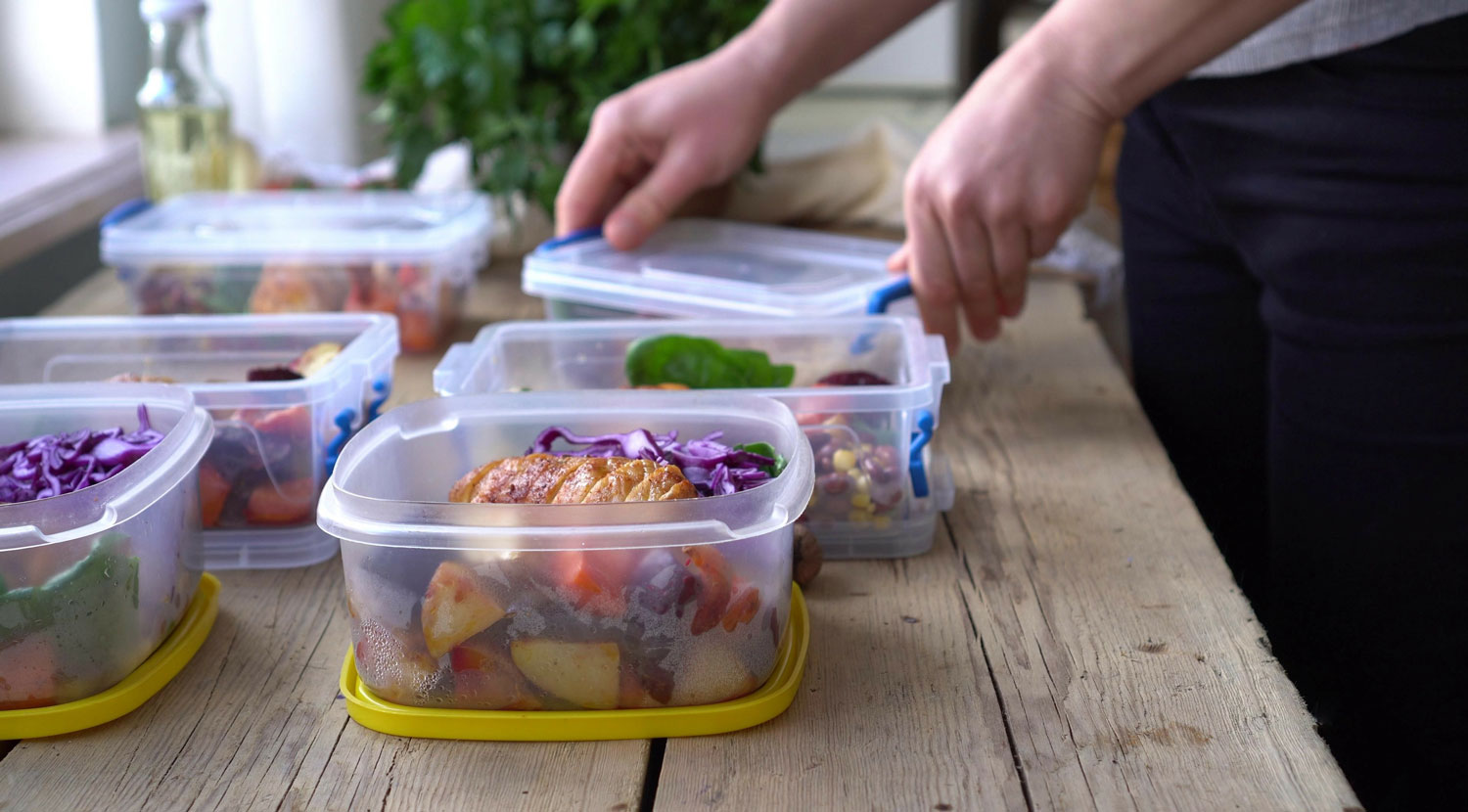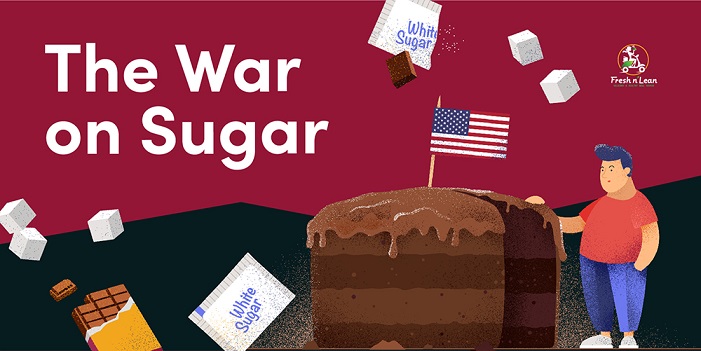If you’re looking to eat a healthy diet without breaking the bank, meal prep might just be your new best friend…
For anyone looking to save money and time but still get all the nutrients needed to live a healthy, active lifestyle, it’s no doubt the way to go.
Great news:
Today, we’re going through everything you need to know to master the art of cheap meal prep, including awesome recipes, five top tips, and much more…
Let’s get started!
Table of Contents
What is Meal Prep?
4 Ways to Make Meal Prep Even Cheaper
– Use Canned Fruits + Veggies
– Opt for Frozen Food
– Buy Ingredients in Bulk
– Don’t Waste Your Scraps + Leftovers
– Get Thrifty
Easy & Cheap Meal Prep Recipes
What is Meal Prep?
As you might already have guessed, meal prep is the practice of preparing meals ahead of time – usually a few days to a week in advance.
Those dishes can be fully prepped (meaning they need no tweaking, just reheating) or partially prepared (with a few more steps required before tucking in).
Either strategy can be great for stocking up on healthy meals to enjoy at home with the family, or on-the-go at work or school. Whether you’re a hard-charging entrepreneur, an avid gym goer or the busy parent, meal prep can help you get the most out of life whilst saving you time and money. Win-win.
With regards to the former, opting for homemade food instead of buying out can potentially add up to $215 000 to your retirement fund. And although meal prepping requires a little planning and an initial chunk of time to carry out (usually a Sunday evening), in the long run, it saves a whole load of time too – potentially up to 9 whole days a year.
Find out more about the benefits of meal prep (and how to do it step-by-step) in our guide for easy meal prep: How to Meal Prep: The Ultimate Guide to Saving Time and Eating Healthy.
4 Ways to Make Meal Prep Even Cheaper
The basic principles behind meal prepping are simple to grasp – particularly once you start to put them into practice. The great news is that making meal prep cheap is also really easy to do, especially if you follow these five key tips:
1. Use Canned Fruits + Veggies
Canned food often gets a bad rep, but it’s actually one of the most cost-effective ways to add a boatload of nutrition to your diet (when done right). It has a super long shelf life, it’s easy to store and use, and it’s considerably cheaper than fresh produce. Just make sure they aren’t preserved in anything that can reduce their nutritional value like salt, sugar, or juice!
A few staples to add to your meal prep shopping list:
- Legumes – Protein-packed beans and lentils make great additions to salads, soups, and rice dishes like chile.
- Canned Veggies – Great for mixing into hearty soups, stir-frys, and fried rice dishes.
- Canned Fruit – An excellent option for adding to plain yogurt, eating on its own, or blending into super smoothies.
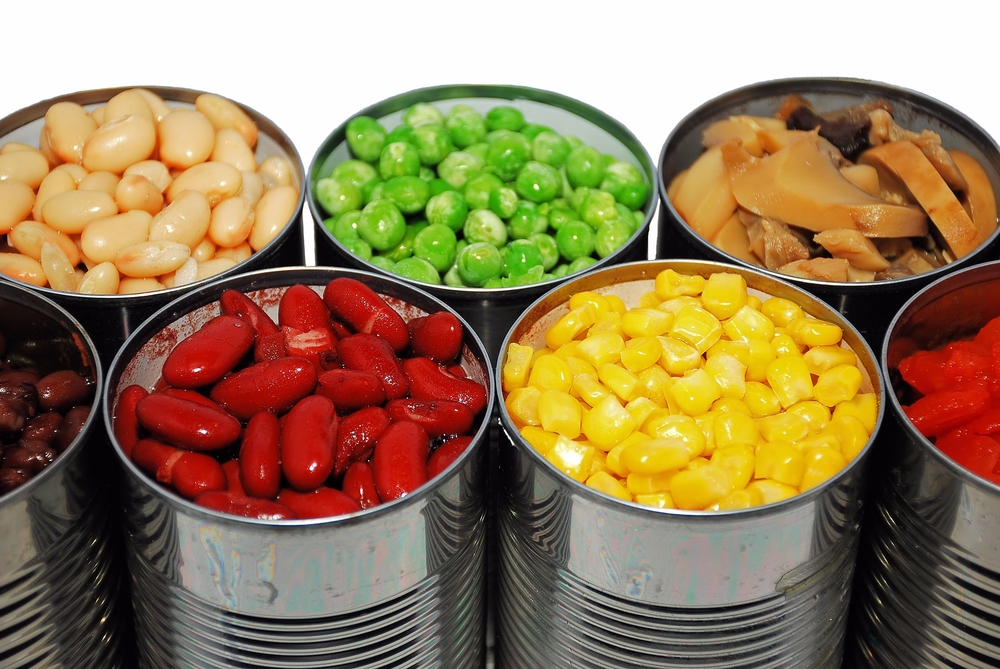
Canned Food Top Tips
Like with any food, the quality of your tinned produce can have a big impact on the overall nutritional content. A few top tips for picking the best:
- Go Low Sodium – Beans and veggies stored in water as opposed to brine are generally going to be better options when it comes to maintaining healthy blood pressure levels and heart function.
- Avoid Syrups – Many canned fruits come stored in sugar-rich syrups that can spike blood glucose and encourage fat storage. Instead, look for those that come in their own fruit juice, water, or light syrups.
- Try BPA Free – If possible, try to stay clear from canned produce containing BPA. The chemical can potentially leach into foods and has been linked with adverse health conditions (but unless you’re eating excessive amounts, you shouldn’t be too worried).
Canned Food Quality Vs Fresh?
The big concern for many is the quality of canned food compared to fresh produce. The good news is that there doesn’t seem to be a remarkable difference.
Whilst some water-soluble nutrients like Vitamins C and B tend to be a little lower in canned food compared to fresh, other nutrients seem to be unaffected (and levels of some antioxidants can potentially increase).
2. Opt For Frozen Food
Like canned, frozen food is another super convenient and budget-friendly way of storing healthy, great-tasting produce that you can use whenever you need in your cheap meal prep.
A few of our favorites you can add to the shopping list include:
- Frozen Veggies – From standalone kale to ready-made mixes – frozen veggies are great for adding to stir-frys, roasting, and loading into soups and stews.
- Frozen Fruit – Our favorite way of adding a whole load of micronutrients (and flavor) into smoothies. They also work well in desserts and as breakfast toppings.
- Frozen Meats – Good quality frozen meats are a great way to add affordable protein to any main meal. MEatballs, shrimp, chicken, and fish are all great options.
Does Freezing Destroy Nutrients?
Not necessarily!
A 2015 study compared the micronutrient concentrations in various foods before and after freezing. Aside from a decrease in beta-carotene concentrations, they concluded that “the vitamin content of the frozen commodities was comparable to and occasionally higher than that of their fresh counterparts”.
How does this work?
Oftentimes frozen food is picked at peak ripeness and stored in the freezer right away when the food is at its freshest and has a high nutritional value. Greens peas, for example, lose more than half their vitamin C content in the first 24 hours after picking, so they’re frozen asap.
Interestingly, much of the fresh food we see in supermarkets has been transported across the world and left to sit there for weeks or even months at a time! So when it comes down to it, it seems frozen can often be the ‘fresher’ option.
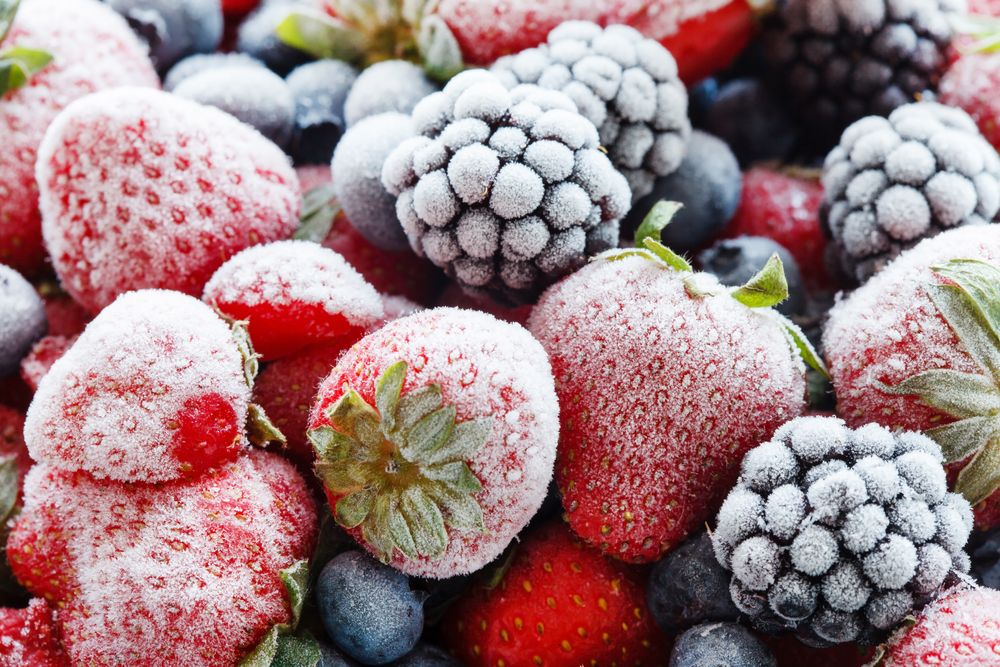
Freezer Basics: Safety, Storage + More (dropdown)
For many of us, the freezer predominantly acts as food stopover between the oven and the trash can – but that doesn’t have to be the case!
When it comes to utilizing your freezer to its full potential, here are some handy tips:
Food Prep. First up, it’s important to decide whether you’ll be freezing individual ingredients or fully premade meals. If you’re going the partial-prep route, it pays well to chop or slice your ingredients prior to freezing, as opposed to freezing them whole.
Storage. When it comes to storing your food in the freezer, resealable bags or containers are your best bet. If you do go the bagged route, be sure to squeeze out as much air as possible before sealing to minimize freezer burn (which can dry out your ingredients).
Organize. Organization is the key to success. Defrost the freezer when required to free up extra space, get your marker for labeling, then organize your meal prep ingredients in an order that makes the most sense to you.
Be Safe. Whilest freezing significantly increases the shelf life of your home produce, it’s still important to be mindful of food safety. If in doubt, refer to this database for optimum freezing times for various foods, and other safety tips.
How to Use Your Freezer to Save Time + Money
The freezer can be an absolute lifesaver when it comes to preventing food waste and saving money. Here’s our guide to freezing everything you could possibly need to freeze:
Fruits
Frozen fruits are amazing for adding to smoothies and desserts, and the process is super simple.
- Start by giving your fruit a good rinse in cold water.
- Leave them to dry on a paper-towel-lined tray for an hour.
- Chop into small slices if necessary (apples, pears, bananas etc)
- Transfer your fruit to a baking sheet, freeze for an hour, then store in a sealable bag or container.
Veggies
If you’re making your own fresh veggies to store as food prep ingredients, blanching is an important first step. It may sound scary, but simply involves:
- Start with two bowls of water – one filled with cold and ice cubes, the other brought to the boil on the stove.
- Prep your veg then flash cook in the boiling water for 30 seconds, then transfer one piece to the cold bath and test to see if the veg is cooked to your liking.
- Repeat this process until you’re satisfied – most veg take between 2-5 minutes.
- When the veg are cooked, transfer them into the cold bath, pat them dry, then they’re ready to portion out and freeze!
Breads
Frozen bread is always handy to have in stock, and here’s exactly how to do it right:
- If it’s a loaf intended for sandwiches, start by slicing before packing to make life easier.
- Wrap your bread in a ziplock bag – some recommend double bagging to really seal the dough in and prevent freezer burn.
- When you’re ready to defrost, leave your bread on the counter in the packaging for a few hours so it gets the chance to reabsorb some of the moisture.
- For that fresh feel, it’s generally agreed upon that baking your bread back to life is your best bet – popping it in the oven for 5-10 minutes at 350 degrees.
Meats
Another super handy ingredient to have on hand whenever you need, here’s the lowdown on freezing meat and fish:
- Prep your meat into serving sizes of your choosing.
- Wrap each serving tightly in freezer paper or plastic ziplock bags – the tighter the better to minimize freezer burn.
- When it comes to defrosting, the safest way is to transfer your meat to the refrigerator and let it naturally thaw. If you are in a rush, most microwaves have a defrost setting that can thaw meat in a few minutes.
- Avoid leaving meat on the counter or cooking straight from frozen to minimize the risk of nasty bacterial growth and prevent undercooked meat.
Whole Meals
If you’re going the whole way with your cheap meal prep and freezing whole meals, here’s how to do exactly that:
- Note that whilst most meals are freezable, those with a higher water-content (soups, stews etc.) tend to taste best after reheating. However, keep in mind that water expands a bit when frozen, so choose a container that has a bit of flexibility.
- Portion your cooked meal out into your choice of containers – bonus points for labeling each one with your trusty marker.
- Piping hot meals and the freezer don’t mix well, so to speed up the cooling process, add some ice cubes and a shallow layer of cold water to the sink and bathe the sealed containers until their temperature starts to fall.
- Store in an order that makes sense to you, and when you’re ready to enjoy, reheat thoroughly in the oven or microwave.
3. Buy Ingredients in Bulk
The great thing about many dry ingredients is that they can be purchased in bulk. Sure, it’s an initial investment to fork out on, but in the long run, it’s a much more cost-effective way to shop (really handy if you’re looking to thrive on cheap meal prep dishes).
Some of our favorites for bulk buying include:
- Whole grains
- Oats
- Rice
- Beans
- Lentils
- Pasta
- Nuts & Seeds
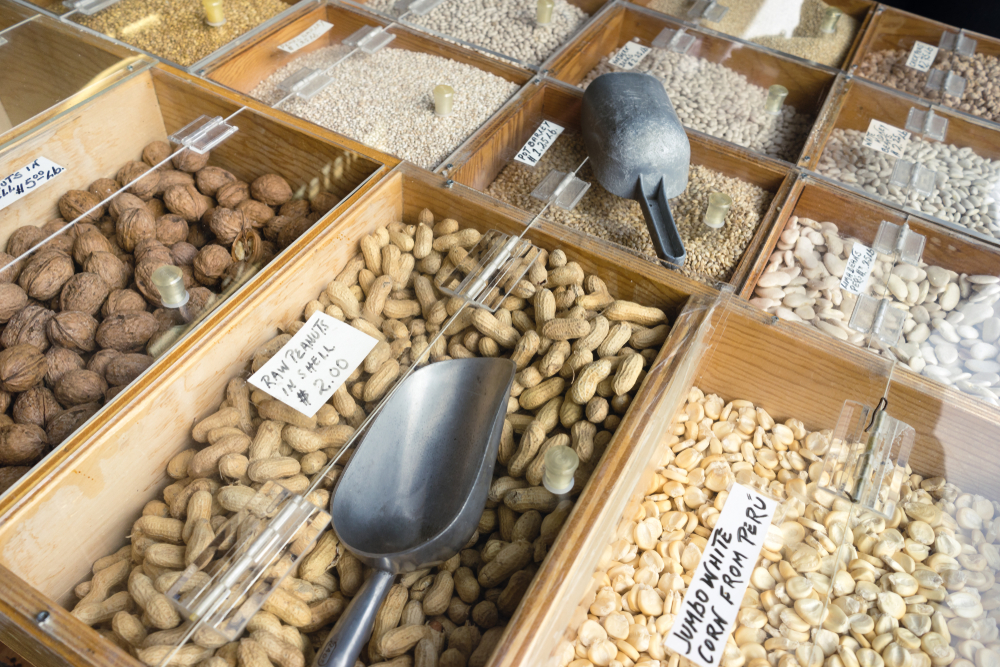
Meat can also be a cheaper bulk purchase – think whole rotisserie chickens or a big side of salmon. It’s important however to freeze what you don’t need right away, preferably in single servings to make your meal prep an even easier process.
4. Don’t Waste Your Scraps + Leftovers
Ah, leftovers…
Another saviour when it comes to eating healthily without breaking the bank. With a little lateral thinking, those scraps can be transformed into super nutritious meals (with your tastebuds none the wiser).
A few genius ways to reduce waste and repurpose ingredients include:
- Leftover rice can be transformed into a delicious fried-rice dish.
- Veggie scraps can be added into a pot and used to make stir-frys or soups.
- Smaller veg offcuts like stalks can be frozen and built up over time, before being boiled up to make stock.
- Fruits that are a tad overripe can be frozen and blended into smoothies
- Chicken or fish bones can be boiled up to make a hearty bone broth soup.
5. Get Thrifty
On top of the above, here are a few more creative ways to get thrifty and save even more money on your meal prep journey:
- Save Those Coupons. Coupons from magazines, newspapers, and loyalty schemes are an awesome way to save money off your food shop and make meal prep that little bit more affordable.
- Shop the Discounts. Keep your eyes peeled for sales, and stock up when possible. Near the end of the day, many supermarkets will discount food that’s nearing its expiry date – perfect for bulk buying, prepping and freezing!
- Go Unbranded. Pro tip – often times, ‘value versions’ of supermarket food tend to be identical in nutritional quality to the standard branded versions (whilst saving you a whole load of money).
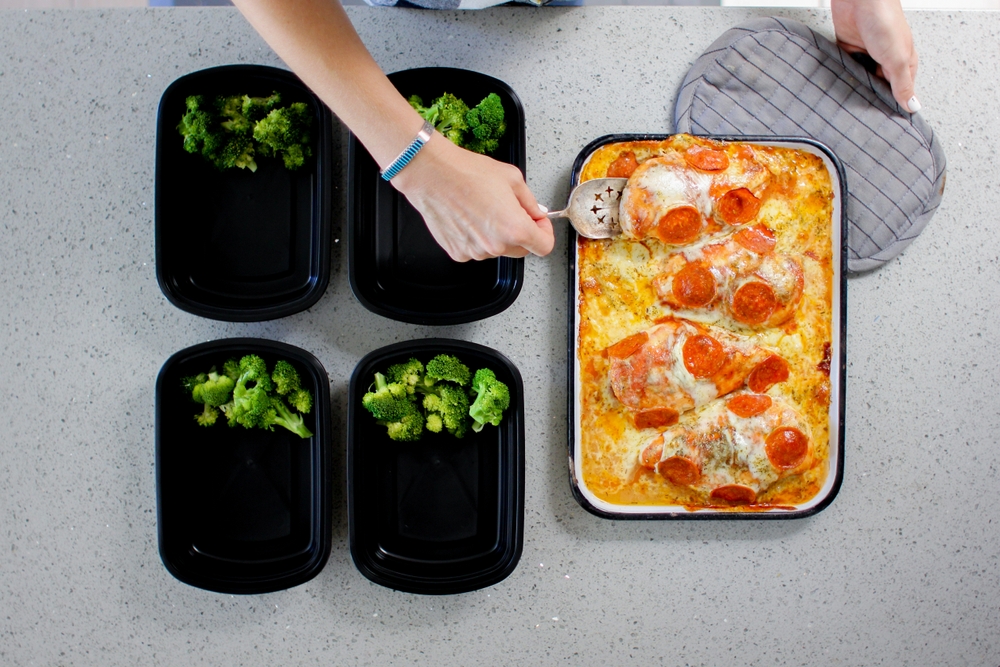
Easy & Cheap Meal Prep Recipes
Here are a collection of delicious recipes that will help you put the above five tips into action. Give them a try and let us know which one is your favorite!
Soups
Tasty-Italian Veggie Soup
Tuscan Turkey Soup
Lasagna Soup
Slow Cooker Chicken Taco Soup
Bone Broth Soup
Lentil & Bean Soup
Sweetcorn Chowder
Asian Fish Broth
Stir-fry
Egg Fried Rice with Prawns & Peas
Sweet Potato & Chicken Mexican Stir-fry
Chicken & Cashew Stir-fry
Black Bean & Leftover Veg Stir-fry
Extra Vegetable Fried Rice
Teriyaki Tuna Stir-fry
Leftover Roast Stir-fry
Sweet & Spicy Beef Stir-fry
Pastas
Easy Creamy Pasta
Penne Primavera
Chicken and Broccoli Penne
Easy Tuna Pasta
Leftover Ham Carbonara Cake
Tagliatelle with Peas & Summer Green Pesto
Chicken & Broccoli Pasta Bake
Mexican Pasta Bake
Burritos
Leftover Chicken & Veg Burrito
Burrito Avocados
Beef & Bean Burritos
Easy & Simple Burrito
Whole Grain Veggie Burrito Bowl
Easy Beef Burrito Skillet
Sausage & Egg Burrito
Barbecued Chicken Burrito
Beans + Grain Dishes
Black Bean & Couscous Salad
Easy Fried Rice
Restaurant Style Fried Rice
Easy Chili
Vegetarian Chili
Couscous With Crispy Pancetta and Butternut Squash
Quinoa with Black Beans & Cumin
Tuna, Bean & Buckwheat Salad
Time to Get Prepping!
With all the resources and recipes you could hope for, now it’s time to put those ideas into action and get prepping!
Meal prep in itself is already a great way to save money and eat healthily at the same time – and with these simple strategies, it can only get better!
Give it a try and let us know which recipe or tip was the most useful.
